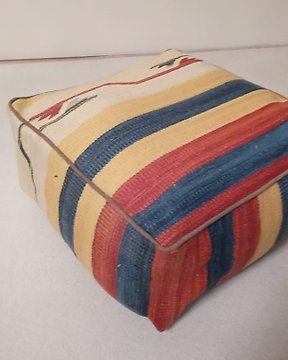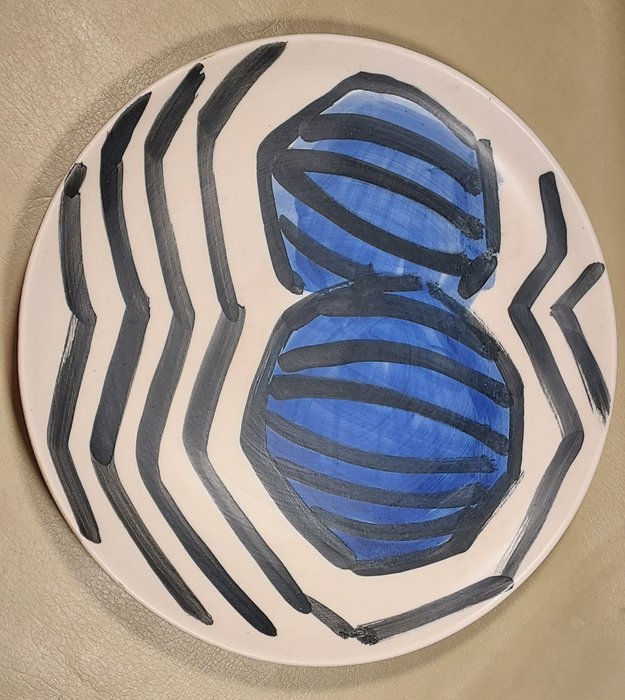
Polsterhocker - Koton, Yün
Nr. 81751013

Nr. 81751013

A hand made ceramic platter in excellent condition, dated 2000, signed by the artists' workshop. It is 38cm wide. Earthware with white glaze and black and blue coloured ceramic stains, painted with pyrrochromes. Eleni Vernardaki.
Eleni Vernadaki studied ceramics at Hammersmith College of Art and Building in London (1957-1959). She returned to Greece at the end of 1959 and opened a workshop in the centre of Athens (20 Solonos Street), which in 1974 was moved to a building in Kantza, which had been specially designed by the architect Takis Zenetos. In 1961 she became part of Art Group A which aimed to promote art to the wider public.
From 1968 to 2015 she ran the Athens Design Center - adc, which she founded with her husband, Nikos Papadakis, and which became a focal point and a dynamic hub of activity, displaying and promoting works to the public that proposed an inspired union of the handmade ceramic art object and modern life. She was also one of the founding members of the Modern Art Society (SYST) and served as general secretary. She exhibited her works in solo and group exhibitions in Greece and abroad.
For over fifty years Eleni Vernadaki created hundreds of object-forms, radically renewing ceramic art in Greece during the second half of the 20th century. In her early works eclectic references to local ceramic tradition and ancient Greek vases emerged. At the same time, however, in the course of her career, the dominant feature in her works was to be the dynamic development of the principles of 20th-century ceramic “modernism”, while she would also produce works that were a distinct expression of the field described as “conceptual ceramics”. A common thread in her creative progress was to be the exploration of concept itself and the limits of ceramic art and of the handmade artistic object in general.
Vernadaki would finally manage to overcome the distinction, firstly, between “high” and “minor” art and, secondly, between the utilitarian and non-utilitarian object. In the spirit of the studio ceramics in which she was trained, she was not bound by the standardized forms or uses of a ceramic work and approached ceramics as a “component expression of the visual arts” as she herself described it – as an art form, the quality of which is defined by continuous technical, formal and intellectual exploration on the part of the artist.
So kaufen Sie auf Catawiki
1. Etwas Besonderes entdecken
2. Höchstgebot abgeben
3. Sichere Zahlung durchführen